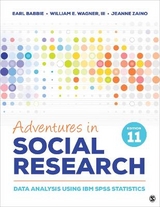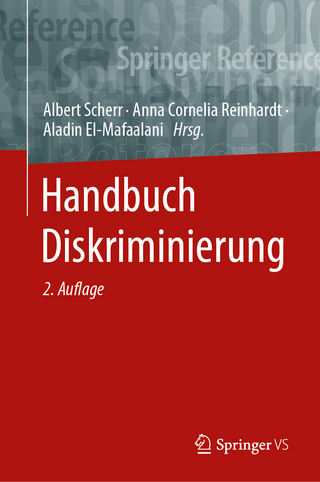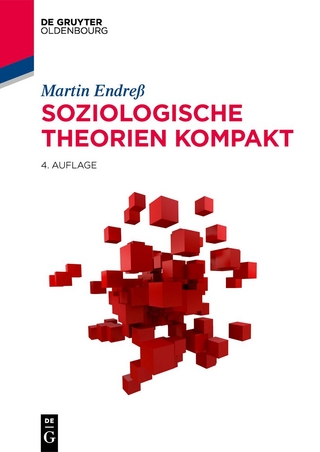
Adventures in Social Research
SAGE Publications Inc (Verlag)
978-1-5063-6277-9 (ISBN)
- Titel erscheint in neuer Auflage
- Artikel merken
The fully revised Tenth Edition of Adventures in Social Research: Data Analysis Using IBM® SPSS® Statistics offers step-by-step instruction on data analysis using the latest version (24.0) of SPSS and current data from the General Social Survey. Organized to parallel most introductory research methods texts, this text starts with an introduction to computerized data analysis and the social research process, then takes readers step-by-step through univariate, bivariate, and multivariate analysis using SPSS Statistics. The range of topics, from beginning to advanced, make Adventures in Social Research appropriate for both undergraduate and graduate courses.
Earl Babbie was born in Detroit, Michigan, in 1938, but his family chose to return to Vermont 3 months later, and he grew up there and in New Hampshire. In 1956, he set off for Harvard Yard, where he spent the next 4 years learning more than he initially planned. After 3 years with the US Marine Corps, mostly in Asia, he began graduate studies at the University of California—Berkeley. He received his PhD from Berkeley in 1969. He taught sociology at the University of Hawaii from 1968 through 1979, took time off from teaching and research to write full-time for 8 years, and then joined the faculty at Chapman University in Southern California in 1987. Although he is the author of several research articles and monographs, he is best known for the many textbooks he has written, which have been widely adopted in colleges throughout the United States and the world. He also has been active in the American Sociological Association for 25 years and currently serves on the ASA’s executive committee. He is also past president of the Pacific Sociological Association and California Sociological Association. William E. Wagner, III, PhD, is Chair of the Department of Sociology at California State University, Dominguez Hills and Executive Director of the Social Science Research & Instructional Council of the CSU. He is co-author of Adventures in Social Research, 11th edition (SAGE, 2022), The Practice of Survey Research (SAGE, 2016), and A Guide to R for Social and Behavioral Sciences (SAGE, 2020) and author of Using IBM® SPSS® Statistics for Research Methods and Social Science Statistics, 7th edition (SAGE, 2019). Jeanne Zaino, Associate Professor of Political Science, Iona College, earned a bachelor’s degree in political science and a master’s degree in survey research at the University of Connecticut—Storrs. During that time, she worked as a research assistant at the Roper Center for Public Opinion Research. She went on to earn a master’s degree and PhD in political science from the University of Massachusetts—Amherst. She is currently chair of the Political Science Department at Iona College in New Rochelle, New York, where she teaches courses in American government, institutions, research methods, social statistics, public opinion, scope, and methods. She and her husband, Jeff, are the proud parents of two sons, Maxim and Logan.
Preface
About the Authors
PART I. PREPARING FOR DATA ANALYSIS
Chapter 1. Introduction: The Theory and Practice of Social Research
Overview
Why Use a Database?
SPSS Statistics
Social Research: A Primer
Concepts and Theories: Deprivation Theory
Variables and Hypotheses: Religiosity
Social Research Strategies: Inductive and Deductive
Theory and Research in Practice
Conclusion
Chapter 2. The Logic of Measurement
Validity Problems
Reliability Problems
Distinguishing Between Validity and Reliability
Multiple Indicators
Levels of Measurement
Measurement and Information
Measurement Options
Classifying Variables as Discrete or Continuous
Conclusion
Chapter 3. Description of Data Sets: The General Social Survey
Sampling
Data Collection
The Codebook: Appendix A
Conclusion
PART II. UNIVARIATE ANALYSIS
Chapter 4. Using SPSS Statistics: Some Basics
Demonstration 4.1: Starting an SPSS Statistics Session
Demonstration 4.2: Exploring the Data View Portion of the Data Editor
Demonstration 4.3: Entering Data—a Preview
Demonstration 4.4: Loading a Data Set
Demonstration 4.5: Raw Data in Data View
Finding Variable Information: Values and Labels
Demonstration 4.6: Variable View Tab
Demonstration 4.7: Ending Your SPSS Statistics Session
Conclusion
Chapter 5. Describing Your Data: Religiosity
Demonstration 5.1: Opening Frequently Used Data Files
Demonstration 5.2: Setting Options—Variable Lists and Output Labels
Demonstration 5.3: Frequency Distributions
Demonstration 5.4: Frequency Distributions—Running Two or More Variables at One Time
Descriptive Statistics: Basic Measures of Central Tendency and Dispersion
Demonstration 5.5: The Frequencies Procedure
Demonstration 5.6: The Descriptives Procedure—Calculating Descriptive Statistics for Continuous Variables
Demonstration 5.7: Printing Your Output (Viewer)
Demonstration 5.8: Adding Headers/Footers and Titles/Text
Demonstration 5.9: Saving Your Output (Viewer)
Demonstration 5.10: Saving Changes to Your Data Set
Conclusion
Chapter 6. Presenting Your Data in Graphic Form: Political Orientations
Graphing Data With Direct “Legacy” Dialogs
Demonstration 6.1: Frequency Table—POLVIEWS
Demonstration 6.2: SPSS Statistics Chart Editor
Demonstration 6.3: Frequency Table—PARTYID
Demonstration 6.4: Political Attitudes
Demonstration 6.5: Histogram—AGE
Demonstration 6.6: Line Chart—INCOME
Saving and Printing Your Charts
Conclusion
Chapter 7. Recoding Your Data: Religiosity and Political Orientations
Demonstration 7.1: Modifying Variables With Recode—ATTEND ? CHATT
Demonstration 7.2: Recoding AGE ? AGECAT
Demonstration 7.3: Recoding POLVIEWS ? POLREC
Demonstration 7.4: Recoding PARTYID ? PARTY
Demonstration 7.5: Saving Changes to Your Data Set
Conclusion
Chapter 8. Creating Composite Measures: Exploring Attitudes Toward Abortion in More Depth
Demonstration 8.1: Identifying the Seven Abortion Variables—File Info
Demonstration 8.2: Running Frequencies for Several Variables at Once
Index: A Form of Composite Measure
Demonstration 8.3: ABORT Index
Demonstration 8.4: Defining ABORT
Demonstration 8.5: Checking New Index—Comparing Scores on Old and New Variables
Demonstration 8.6: Running Frequencies for ABORT
Demonstration 8.7: ABINDEX
Demonstration 8.8: Running Frequencies
Conclusion
Chapter 9. Suggestions for Further Analysis
Desired Family Size
Demonstration 9.1: Respondents’ Ideal Family Size (CHLDIDEL)
Child-Rearing
Demonstration 9.2: Important Qualities for Children
Attitudes About Sexual Behavior
Demonstration 9.3: Index of Sexual Permissiveness
Prejudice
Conclusion
PART III. BIVARIATE ANALYSIS
Chapter 10. Examining the Sources of Religiosity
The Deprivation Theory of Religiosity
Testing Our Hypothesis: Correlating Religiosity and Gender
Demonstration 10.1: Running Crosstabs to Test Our Hypothesis
Demonstration 10.2: Interpreting a Crosstab With Limited Categories
Demonstration 10.3: Correlating Another Measure of Religiosity and Gender
Drawing Conclusions Carefully: Reassessing Our Original Hypothesis
Demonstration 10.4: Interpreting a Crosstab With Ordinal Variables—Religiosity and Age
Demonstration 10.5: Correlating Other Measures of Religiosity and Age
Conclusion
Chapter 11. Political Orientations as Cause and Effect
The Relationship Between POLVIEWS and PARTYID
Demonstration 11.1: POLREC by PARTY
Demonstration 11.2: PARTY by POLREC
Demonstration 11.3: POLREC by AGECAT
Demonstration 11.4: PARTY by AGECAT
Demonstration 11.5: POLREC by RELIG
Demonstration 11.6: PARTY by RELIG
Demonstration 11.7: PARTY and POLREC by SEX
Demonstration 11.8: POLREC by RACE
Demonstration 11.9: PARTY by RACE
Demonstration 11.10: Recoding EDUC ? EDCAT
Demonstration 11.11: POLREC by EDCAT
Demonstration 11.12: PARTY by EDCAT
Some Surprises: Class, Marital Status, and Politics
The Impact of Party and Political Philosophy
Saving Recoded Variable: EDCAT
Conclusion
Chapter 12. What Causes Different Attitudes Toward Abortion?
Demonstration 12.1: Gender and Abortion
Demonstration 12.2: Age and Abortion
Demonstration 12.3: Religion and Abortion
Demonstration 12.4: Politics and Abortion
Demonstration 12.5: Sexual Attitudes and Abortion
Other Factors You Can Explore on Your Own
Conclusion
Chapter 13. Measures of Association for Nominal and Ordinal Variables
The Logic of Statistical Association: Proportionate Reduction of Error
Lambda (?): A Measure Appropriate for Nominal Variables
Demonstration 13.1: Instructing SPSS Statistics to Calculate Lambda (?)
Interpreting Lambda and Other Measures
Gamma (?): A Measure Appropriate for Ordinal Variables
Demonstration 13.2: Instructing SPSS Statistics to Calculate Gamma (?)—Example 1
Demonstration 13.3: Running Gamma (?)—Example 2 (Reverse Scoring Case)
Additional Measures of Association
Analyzing the Association Between Variables at Different Levels of Measurement
Conclusion
Chapter 14. Correlation and Regression Analysis
Pearson’s r: A Measure Appropriate for Interval/Ratio Variables
Interpreting Pearson’s r and the Coefficient of Determination (r2)
Instructing SPSS Statistics to Calculate Pearson’s r
Demonstration 14.1: Recoding RINCOM16 ? RECINC
Demonstration 14.2: Using SPSS Statistics to Compute Pearson’s r
Demonstration 14.3: Requesting Several Correlation Coefficients
Regression Analysis
Demonstration 14.4: Regression
Demonstration 14.5: Presenting Data Graphically—Producing a Scatterplot With a Regression Line
Measures of Association for Interval and Ratio Variables
Analyzing the Association Between Variables at Different Levels of Measurement
Conclusion
Chapter 15. Tests of Significance
Statistical Significance
Significance Tests: Part of the Larger Body of Inferential Statistics
Statistical Significance Versus Measures of Association
Chi-Square (c2)
Demonstration 15.1: Instructing SPSS Statistics to Calculate Chi-Square
Significance and Association
Demonstration 15.2: Instructing SPSS Statistics to Run Independent-Samples t Test
Demonstration 15.3: t Test—EDUC by SEX
Analysis of Variance
Demonstration 15.4: Instructing SPSS Statistics to Run ANOVA
A Statistical Toolbox: A Summary
Conclusion
Chapter 16. Suggestions for Further Bivariate Analyses
Demonstration 16.1: Desired Family Size
Child-Rearing
Attitudes About Sexual Behavior
Demonstration 16.2: Investigating Sexual Permissiveness Further
Additional Resources
Conclusion
PART IV. MULTIVARIATE ANALYSIS
Chapter 17. Multiple Causation: Examining Religiosity in Greater Depth
Multiple Causation
Demonstration 17.1: The Impact of Age and Sex on Religiosity
Demonstration 17.2: Family Status and Religiosity
Demonstration 17.3: Family Status and Religiosity, Controlling for Age
Demonstration 17.4: Social Class and Religiosity
Other Variables to Explore
Chi-Square and Measures of Association
Multiple Regression
Conclusion
Chapter 18. Dissecting the Political Factor
Political Philosophy and Party Identification
Demonstration 18.1: Controlling for Education
Demonstration 18.2: The Mystery of Politics and Marital Status
Political Issues
Conclusion
Chapter 19. A Powerful Prediction of Attitudes Toward Abortion
Religion and Abortion
Demonstration 19.1: Religious Affiliation and Church Attendance
Demonstration 19.2: Religious Affiliation, Church Attendance, and Abortion
Politics (POLREC, PARTY) and Abortion (ABORT)
Demonstration 19.3: The Interaction of Religion and Politics on Abortion Attitudes
Demonstration 19.4: Constructing an Index of Ideological Traditionalism
Sexual Attitudes and Abortion
Demonstration 19.5: Recode PREMARSX and HOMOSEX
Demonstration 19.6: The Relationship Between Sexual Permissiveness and IND
Conclusion
Chapter 20. Suggestions for Further Multivariate Analyses
Ideal Family Size and Abortion
Child-Rearing
The Protestant Ethic
Capital Punishment, Gender, and Race
Demonstration 20.1: CAPPUN by SEX
Demonstration 20.2: CAPPUN by SEX, Controlling for RACE
Conclusion
PART V. THE ADVENTURE CONTINUES
Chapter 21. Designing and Executing Your Own Survey
The Social Research Process and Proposal
Designing and Executing Your Own Survey
Getting Ready for Data Analysis Using SPSS Statistics
Step 1: Define Your Data
Demonstration 21.1: Example 1—Defining ID
Demonstration 21.2: Example 2—Defining CHLDIDEL
Demonstration 21.3: Copying a Variable
Demonstration 21.4: Saving Your New File
Step 2: Edit and Code Your Data
Demonstration 21.5: Accessing File Information for Coding and Editing
Step 3: Enter Your Raw Data
Demonstration 21.6: Moving Through Data View
Demonstration 21.7: Entering Data
Demonstration 21.8: Revising or Deleting Data
Demonstration 21.9: Saving Your Data File
Writing a Research Report
Conclusion
Chapter 22 Further Opportunities for Social Research
The Unabridged GSS
Other Data Sets
Other Computer Programs
Conclusion
Appendix A: The Codebook
Appendix B: Questionnaire for Class Survey
Index/Glossary
| Erscheinungsdatum | 13.06.2018 |
|---|---|
| Verlagsort | Thousand Oaks |
| Sprache | englisch |
| Maße | 215 x 279 mm |
| Gewicht | 960 g |
| Themenwelt | Sozialwissenschaften ► Soziologie ► Allgemeine Soziologie |
| ISBN-10 | 1-5063-6277-X / 150636277X |
| ISBN-13 | 978-1-5063-6277-9 / 9781506362779 |
| Zustand | Neuware |
| Haben Sie eine Frage zum Produkt? |
aus dem Bereich



